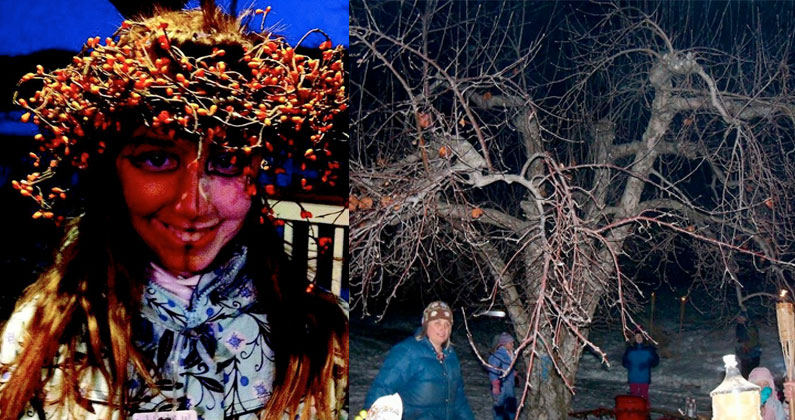This story originally ran in our winter/spring print issue. To subscribe to the print issue, click here.
By Pete Brown
Photos courtesy Slyboro Cider House
As we rediscover cider and the farms and orchards they hail from, we are also reuniting with the natural world. As our lives become increasingly virtual, we develop a counterbalancing need to feel the earth beneath our feet and the wind in our hair. There’s mystery in the countryside—there are things in the woods that scare and thrill us; legends and spirits, older and deeper than civilization.
Not really of course. We don’t really buy all that stuff. Or do we
Every January, in the naked, frozen orchards of Herefordshire and Somerset in the west of England, people carrying burning torches gather around apple trees. Some are dressed in outrageous costumes. Some play music and sing old songs passed down orally through the centuries, unthreading into different versions across the counties. They make a riot of noise, sometimes with shotguns, sometimes with pots and pans, other times with ululating voices and screams. With these weapons—and sometimes with the help of pagan druids—they drive the evil spirits of winter from the branches of the tree, wake its roots from their slumber and leave offerings of bread soaked in cider to attract the good spirits of springtime.
A decade ago, the ancient ceremony of wassail was typically attended by a troop of Morris men—the traditional folk dancers of Merrie England—and no one else. Today, a typical wassail will be attended by several hundred people: men and women, young and old, Christians and pagan and atheist, families and young couples and old farmers, all gathering to bear witness to a superstition as old as any mainstream religion.
Without any recognition from mainstream media, with no corporations, sponsorship or greetings cards, wassail is becoming a popular ceremony. For most who attend, it’s both semi-serious and light-hearted. Whether or not you truly believe in the good and evil spirits of the orchard, it’s an excuse for a party at the bleakest time of the year. And more than that, it connects us with the land, with the passing of the seasons and the hope of renewal.
Traditions such as wassail are mutable, adapting to the people who curate them. During the wassail at the Slyboro Cider House in Granville, New York, children draw pictures of the various bugs and pests that attack apple trees and then ceremonially burn these pictures on a bonfire.
Of course, none of it makes any difference to the quality of the next year’s harvest. We’re too wise to believe such things. Or at least, we are until we stand by the fire, our voices hoarse from shouting, and we gaze out beyond its glow, into the unknowable darkness, and share for a few moments the hopes and fears of those who stood here centuries ago.






